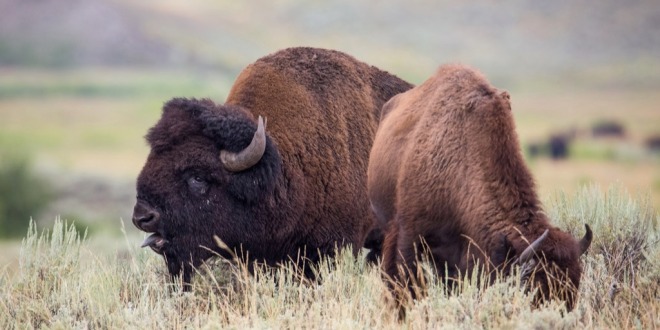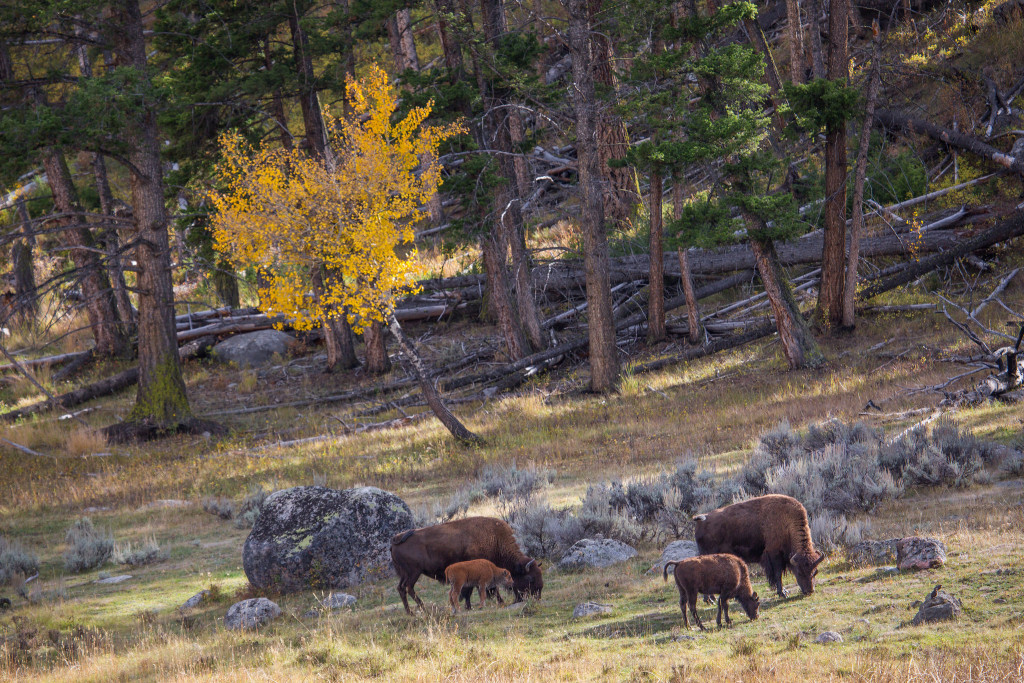If you’re thinking of taking a selfie with your favorite Yellowstone bison, you might want to think twice. For your health.
Late last week, the Centers for Disease Control and Prevention (CDC) released a report on American bison, centered on bison-related injuries that have happened in Yellowstone National Park since 1980. Among the report’s findings:
• After a peak 33 injuries between 1983-85, the Park implemented a largely successful outreach campaign to inform visitors of proper conduct.
• Between 2010-2014, an average of 0.8 bison-related injuries occurred.
Which brings us to 2015, when there were five injuries reported, some minor, some serious although none resulted in deaths. The full breakdown is below:
Mid-May 2015: a 16-year-old visitor was seriously injured after attempting to take a picture with a bison. Reports say she got within three to six feet of the animal and was gored.
Early June 2015: a 62-year-old man was tossed while attempting to photograph a bison from three to five feet away. His injuries were considered serious but not life-threatening.
Late June/early July 2015: June 23, a 19-year-old employee was tossed by a bison she accidentally encountered while off-trail late at night. Her injuries were considered minor. July 1, a 68-year-old woman was gored when she attempted to walk around a bison hanging out on the Storm Point trail. Her injuries were serious.
Late July 2015: a 43-year-old woman was gored while trying to take a picture with her daughter and a bison standing 18 feet away. The bison charged and tossed the woman, who put herself between the animal and her daughter. She sustained minor injuries.
Wildlife and “Social Media Sharing of Selfies”
Yellowstone’s wildlife policy is iron clad: visitors must never approach any wildlife such as bison, elk, and deer within 75 feet. The rules are even more stringent for animals such as wolves and bears: no approaching more than 300 feet. None of the five followed these rules above; for the sake of fairness, two of these were accidental encounters.
However, the three other injuries share a common element: they involved photography, a fact the CDC stressed heavily in their report:
During 1980–1999, a total of 10 of 35 bison encounters (29%) involved photography (1); the majority of persons were ≥10 ft (3 m) from the bison, unlike the 3–6 ft (1–2 m) reported with recent photography-related injuries. Smart phones now meet the needs of most casual photographers. Smart phones are owned by 64% of American adults, and 67% of smart phone owners report using their phone to share pictures and videos (6). The popularity of smart phone photography with its limited zoom capacity and social media sharing of selfies might explain why visitors disregard park regulations and approach wildlife more closely than when traditional camera technology was used. Educating visitors about wildlife behavior and the need to maintain distances of 75–300 ft (23–91 m) from wildlife for safety of persons and wildlife is critical. Injury prevention campaigns that identify and target the underlying motivations of visitors to not comply with viewing distances might prevent future injuries.
So from us to you, we say: don’t take a bison selfie. It’s not worth it.
 Yellowstone Insider Your Complete Guide to America's First National Park
Yellowstone Insider Your Complete Guide to America's First National Park







You must be logged in to post a comment.